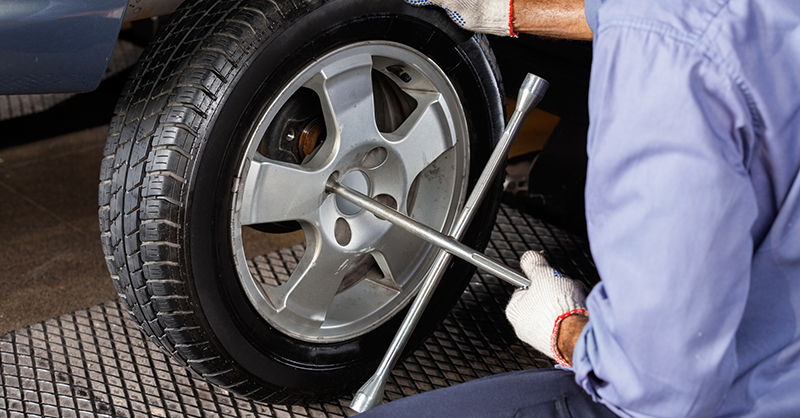Tire Rotation Remains A Key To Longer (Tire) Life

Rotating your tires remains one of the most crucial parts of preventative maintenance.
“Regular tire rotation is one of the most important factors in tire safety, performance and service life,” said Dan Zielinski of the Rubber Manufacturers Association.
Why rotate tires at all?
Rotating tires ensures even tread wear and prolong tread life.
“By regularly changing a tire to another position on the vehicle, any abnormal wear patterns that were starting to develop may be corrected,” Zielinski said.
But how often should you rotate your tires? Experts suggest every 5,000 to 8,000 miles, or every other oil change.
Zielinksi offered the following tips about tire rotations:
-If tires show uneven tread wear, check for and correct any imbalance, vehicle alignment issues or underinflation.
-Tires should be rotated every 5,000 to 8,000 miles (or per the tire manufacturer’s recommendations) or at any sign of uneven wear.
-Vehicle manufacturers generally recommend replacing all tires at the same time. Replacing all four tires at the same time makes rotation even more vital for maintaining uniform tread depth and optimum tread wear.
-Some vehicles use different-sized tires mounted on the front and rear axles, or directional tires that can only roll in one direction. (Note: Directional tires are more often found on sports cars, rather than your average passenger vehicle.) Check the recommendations in the vehicle owner's manual or ask your service advisor for tips about proper rotation.
-Tire pressure must be adjusted for their new positions. Adjust tire pressure in accordance with the vehicle manufacturer's recommendations.
-If your vehicle has a matching full-size spare tire, include that tire in the rotation. Technicians should always check and adjust the inflation pressure of the full size spare when incorporating it into the rotation pattern.
-Check the tire tread and sidewall monthly during inflation pressure checks. Looking for uneven or irregular tread wear.